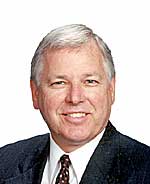Over the years Yvonne and I have visited 27 of America’s 59 National Parks, including two in Alaska and one in Hawaii. Our bucket list (actually mine) includes visiting the remaining 32, although I doubt we will get to all of them because there are 6 more in Alaska and one, for some peculiar reason, is located on the opposite side of the globe in American Samoa.
When we speak of National Parks the majestic Parks of the American West come to mind – Parks like Yellowstone, Yosemite, Glacier, and the Grand Canyon. But several of the National Parks found east of the Mississippi rival these western beauties. Acadia National Park, located along the rugged coastline of Maine, is one such park. It was while on a camping trip to Acadia some 40 years ago that this week’s backpack adventure occurred.
In the summer of 1974 Yvonne and I decided to take a road trip to New England. This was BK – before kids – so it was easy to just pickup and go. We threw our luggage, sleeping bags, tent, and other gear into the trunk of our 1969 Mustang (“black jade”, V8 coup) and headed east from Cincinnati. Our first stop was a tour of the Gettysburg battlefield, then on to Yvonne’s brother’s home in New Hampshire. Jim’s home was in a beautiful wooded setting, abundant with maple, poplar, pine, and fir. During our stay we decided it would be nice to take a few fir trees home to plant in our yard, so on our last day with Jim we dug up three nice two foot tall fir trees, placed the ball of each in garbage bags, and put them in the backseat of the Mustang. Then we were off to Acadia.
We selected a nice campsite and I placed the trees behind our tent so they wouldn’t get overheated in the car during our stay. We spent three glorious days touring the park and discovering the beauty of its trails. Too soon it was time to head home so we loaded our gear and returned the trees to the backseat. I had no more than pulled out of the campground when red and blue lights began flashing in the rearview mirror.
“Driver’s license and registration please”, the young ranger said in a terse voice. While I was retrieving these items he added, “You know it’s a Federal offense to remove plants and wildlife from a National Park, don’t you?”
“Oh”, I said. “I wondered why you stopped me. I can explain. I began telling him the story about digging the trees up at my brother-in-laws house, but the ranger interrupted and said, “I saw you take them from behind your tent and put them in the car.” He obviously wasn’t buying my story.
“Please step out of the car”, the ranger said. This was before cell phones so we had no way of getting in touch with Jim, and we didn’t even have his home number with us. At that moment I was sure I was going to jail.
Until then Yvonne had remained silent, but now she leaned across the console and, batting her eyes (I thought), said to the ranger, “Officer I think I can help.” With that she opened the door to get out, lifting my backpack from the floor by her feet as she did. Them without comment she walked to the back of the car, motioning to the young (and now I noticed tall and good looking) ranger to meet her there.
“Wait here”, the ranger said to me as he turned and walked to the far corner of the car where Yvonne now stood.
Yvonne’s long blonde hair glistened in the morning sun and I could see her smiling as she began to speak. The ranger returned her smile and they spoke in hushed tones for at least seven or eight minutes. Yvonne removed something from the backpack and handed it to the ranger, then I saw him jotting something on a notepad that she was saying to him. I strained to hear what they were saying but could only make out an occasional word or two – “backpack”, “Polaroid”, “seriously?”, and “really dumb”. Clearly they were both enjoying themselves despite my continuing anguish. Finally their conversation ended and Yvonne, still smiling, returned to the car.
The ranger returned to where I was standing, wiping the smile from his face as he approached. “Okay”, he said, “This nice young lady has convinced me that your story is true, but I would advise that you never have live plants in your car again when you are visiting a National Park.” Then he handed my license and registration to me and leaned over to my open window, “It was a pleasure speaking with you, Yvonne. Look me up if you are ever back this way again. And then, without so much as a glance at me, he returned to his car.
I was in too big a hurry to get out of there to question Yvonne when I got in the car, but as we departed Acadia and headed toward the interstate I asked,” What happened back there?”
“You didn’t know it but I took a Polaroid picture of you and Jim when you were digging up the trees. The picture was in your backpack and I gave it to Bret”, Yvonne said.
“Bret?”, I questioned.
“Yes, his name is Bret”, Yvonne said coyly.
“What did you talk about all that time, and what was he writing down”, I persisted.
“Oh nothing”, Yvonne said, gazing out the window instead of toward me.
At that moment I was so grateful for her intervention that I decided to let it go, and we’ve never spoken of it to this day. But if we ever visit Acadia National Park again I’m going to be on the lookout for a ranger named Bret – perhaps he also has retired by now.

